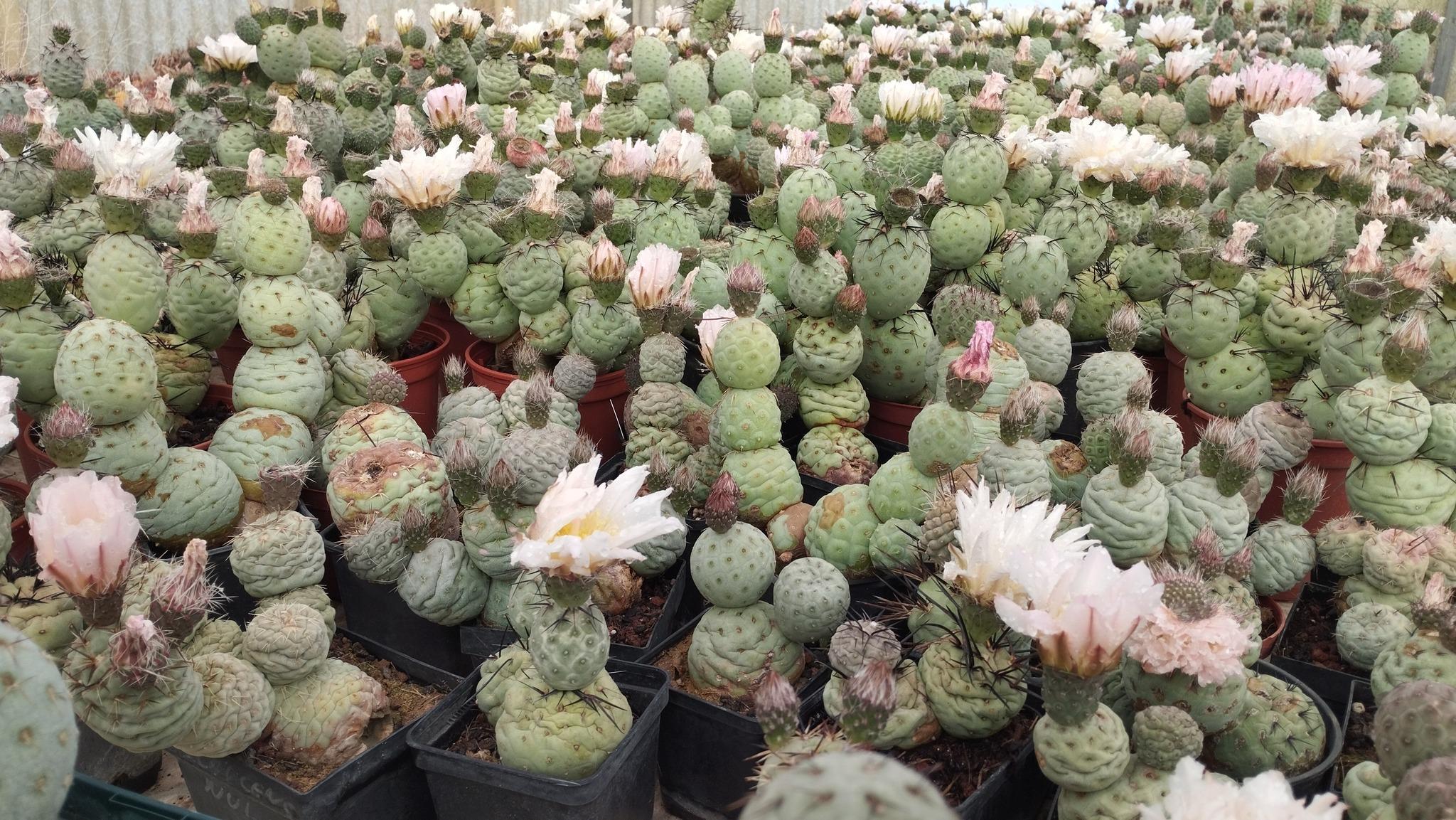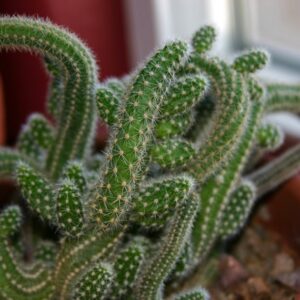Tephrocactus geometricus“🌵✨he Mathematical Marvel of the Cactus World
Tephrocactus geometricus is a highly sought-after and rare species of cactus, native to the high-altitude regions of northwestern Argentina. As its name suggests, this species is renowned for its geometrically perfect, spherical stems, which appear like stacked globes, giving it a unique and artistic appearance unlike typical columnar or sprawling cacti.
Due to its sculptural form, slow growth, and rarity, Tephrocactus geometricus is a coveted specimen among collectors, succulent enthusiasts, and botanical gardens.
🌿 Botanical Overview
Scientific Name: Tephrocactus geometricus
Family: Cactaceae
Origin: Northwestern Argentina (Catamarca and surrounding regions)
Growth Habit: Segmented, globular to slightly flattened spheres
Size:
Individual Segments: 3–5 cm (1.2–2 inches) in diameter
Overall Height: Rarely exceeds 20–30 cm (8–12 inches)
Stem Color: Bluish-green to gray-green with a waxy, glaucous coating
Spines: Usually sparse or absent, but when present, they are short and dark
Flowers: Large, funnel-shaped, pink to violet-pink with yellow centers
Blooming Season: Spring to early summer
USDA Hardiness Zones: 9b–11
☀️ Sunlight and Temperature Needs
Sunlight:
Requires bright, direct sunlight for at least 6 hours daily
Prefers full sun to partial shade in very hot climates
Indoors: Best placed near a south-facing window or under strong grow lights
Temperature:
Thrives in temperatures between 20°C and 30°C (68°F to 86°F)
Tolerates brief exposure to –5°C (23°F) if kept absolutely dry
Protect from prolonged frost and damp cold
🌞 Proper light ensures compact growth and enhances the bluish hue of the stems.
💧 Watering Routine
Active Growing Season (Spring to Fall):
Water deeply when the soil is completely dry
Generally, this is every 2–3 weeks depending on heat and humidity
Avoid frequent watering — less is more
Dormancy (Winter):
Minimal to no watering during winter
Overwatering during dormancy is the primary cause of rot
💧 Always use the soak and dry method — water thoroughly, then wait until the soil dries fully before the next watering.
🌱 Soil Requirements
Type:
Requires exceptionally well-draining, gritty soil
Recommended mix:
50% mineral components like pumice, coarse sand, or crushed granite
25% cactus mix
25% perlite
pH: Neutral to slightly alkaline (6.5–7.5)
🌿 Well-draining soil prevents water retention that can lead to root rot, a common issue in this species.
🌾 Fertilizing Schedule
During Growth Period (Spring to Late Summer):
Apply a diluted cactus fertilizer (low in nitrogen, e.g., 5-10-10) every 4–6 weeks
Alternatively, use a slow-release fertilizer at the beginning of the season
Winter:
No fertilization during dormancy
Over-fertilizing can disrupt the cactus’s natural, slow-growing cycle.
✂️ Pruning and Maintenance
Pruning:
Unnecessary except to remove dead or damaged segments
Handle carefully — segments can detach easily
Maintenance Tips:
Avoid handling the plant frequently to prevent unintentional detachment
Rotate periodically for balanced sun exposure
🌿 Propagation
By Offsets/Segments:
Gently detach a mature segment.
Let the segment callous over for 7–10 days in a dry, shaded area.
Plant in dry, well-drained soil.
Water lightly after 10–14 days.
By Seed:
Slow and requires patience but preserves genetic diversity
Seeds need warm temperatures (~25°C/77°F) and light moisture to germinate
Germination can take several weeks to months
🌱 Propagation by cuttings is faster and more reliable for home growers.
🐛 Pests and Diseases
Common Pests:
Mealybugs
Spider mites
Scale insects
Common Diseases:
Root rot from overwatering
Fungal infections in overly humid environments
🛡️ Prevent issues with proper watering, good ventilation, and pest inspections. Neem oil or insecticidal soap can treat pest infestations.
🌵 Aesthetic and Landscaping Uses
Ideal For:
Cactus and succulent collections
Minimalist and modern decor
Rock gardens
Indoor sunny windowsills
Botanical displays due to its geometric allure
Companion Plants:
Other rare cacti like Ariocarpus, Astrophytum, or Lophophora
📸 Its striking spherical segments and architectural form make it a centerpiece for collectors and a photogenic subject.
✅ Conclusion
Tephrocactus geometricus is a rare, slow-growing gem with an architectural, mathematical beauty that makes it stand out among cacti. With bright light, sparse watering, and well-draining soil, it rewards patience with showy flowers and striking symmetry.
Though slow to grow, it is resilient, low-maintenance, and endlessly fascinating, perfect for enthusiasts seeking a collector’s cactus.
“





Reviews
There are no reviews yet.